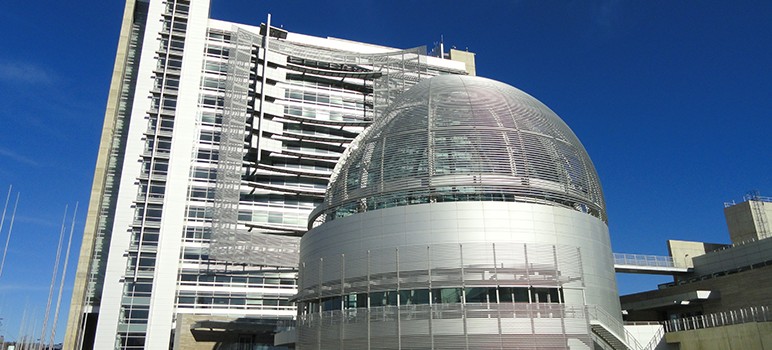Voters this fall may have the option of vesting greater power to San Jose’s public employee retirement boards.
City leaders at Wednesday’s Rules and Open Government Committee meeting will talk about placing a measure on the November ballot that would give the boards full autonomy to “enhance the governance structure.” Doing that would change the city charter, which requires a public vote. And putting that proposal on the ballot would cost $600,000.
If approved, the measure may grant the two boards—one for federated employees and the other for fire and police personnel—the authority to hire and fire employees in Retirement Services, something only the city manager can do now. It might also potentially nix dozens of jobs in the department, give the board the ability to set salaries, revise personnel rules and hire legal counsel. The boards haven't yet decided whether staff would report to them or just senior staff, the city says.
A “yes” vote would basically change the retirement services office from a branch of the city to an independent agency, said David Vossbrink, San Jose's director of communications.
“A fully autonomous retirement services department would mean that all their staff would not be city employees, though the appointment of trustees to the plan boards would still be made by the City Council,” he explained.
That means Director of Retirement Services' Roberto Peña, who’s in charge of the $1.9 billion Federated City Employees Retirement System and the $2.9 billion Police and Fire Department Retirement Plan, would be accountable to the board instead of the city manager.
“Making the switch would, therefore, be complicated,” Vossbrink noted.
The city changed the makeup of its boards a few years ago in response to a report by Cortex Applied Research, which deemed San Jose’s structure inefficient and an anomaly among peer retirement systems.
“There is a built-in tension between the fiduciary responsibility of the plans to retirees and to the city’s financial health,” city manager spokesman Dave Vossbrink explained.
Cortex recommended replacing elected members with independent financial experts.
“The changes to governance that have already been implemented have helped considerably to clarify roles, responsibilities and priorities by taking out political involvement on the boards and replacing it with financial investment expertise,” Vossbrink said.
When Cortex first broached the idea of removing elected members from the boards, critics of the move said they worried the city would appoint people opposed to union interests. Click here for more on that discussion.
Since restructuring a few years ago, the new boards have sought self-government.
“Full autonomy would provide greater clarity and flexibility, and remove any residual tension between city and retirement financial goals,” Vossbrink said. “The city is on a path in this direction, though the timing is uncertain.”
Autonomy would reflect the CalPERS model, he said. PERS handles retirement plans for hundreds of public agencies and remains completely independent from each of them. That prevents a PERS city from holding sway over the decisions of the state retirement board, allowing it, theoretically, to better focus on its fiduciary responsibilities.
Also on the San Jose Rules and Open Government Committee agenda for March 19, 2014:
- A Cesar Chavez commemorative march takes place at 10am on March 29. Councilman Xavier Campos wants to make it a city-sponsored event.
WHAT: Rules and Open Government Committee meets
WHEN: 2pm Wednesday
WHERE: City Hall, 200 E. Santa Clara St., San Jose
INFO: City Clerk, 408.535.1260


Back when City employees elected Board members, the rates of return were high- understandable as the employees had “skin in the game.” About 2009, Reed commissioned an “independent” study that recommended adding financial professionals to the Board (his version of accountability and transparency).
Unsurprisingly, the rates of return were not as high as years’ past which was increased fodder for Rufas’ pension reform crusade. Now, his administration is pushing for more reforms- financial advisors with untold conflicts of interest.
Reed has been tied to Wall Street money and this is another money and power grab for his backers. Local media is failing by not investigating the obvious ties and motivations- from 2009 onward. The City employees have been calling attention to the current Administration’s shenanigans but only now, 5 years later, are they being proven correct.
http://america.aljazeera.com/articles/2014/3/14/san-jose-pensionreform.html
Great article too bad this rag and the murky news won’t pull their heads out of Reed’s b____ long enough and do some actual investigative reporting.
“Retirement Boards hope to break away from San Jose’s Control” Really? this is just a move by Reed to put pensions in the hands of people he has appointed to the Boards . Im sure he will get his “kickback”one way or another. this will allow them to move pension funds into insanely high risk hedge funds , all while over charging for managing the funds. Reed gets his kick back and his Backers get to rape the pensions
This is a very dangerous move financially, for both the retirement funds, retirees and the city should those funds fail. Additionally, this article does not mention the cost of putting this measure on the ballot. Alex Gurza from the city managers office estimates this cost in excess of $600,000. In his memo to the city council it is quite clear they are trying to rush this through to get it on the November ballot before Chuck Reed leaves office and the other council members are termed out. Once enacted only the voters would be able to reverse it.
The measure go’s one step further and eliminates retirees from the board. This is done by a clause that states that any retiree on the board shall have experience managing pension funds.